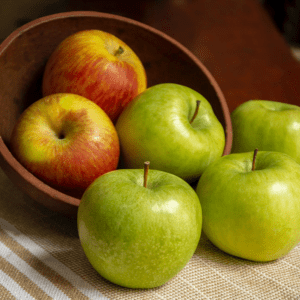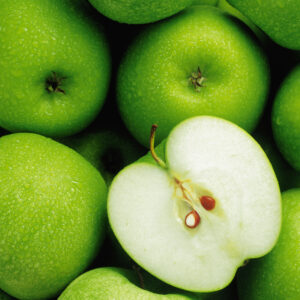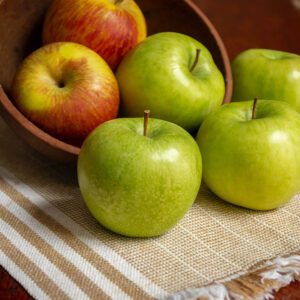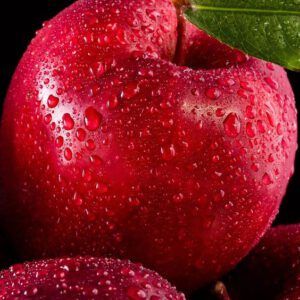PEARS
“Pyrus Communis” are rich in essential antioxidants, plant compounds, and dietary fiber
Product description
A pear is a mild, sweet fruit with a fibrous center. They are rich in essential antioxidants, plant compounds, and dietary fiber. Pears pack all of these nutrients in a fat free, cholesterol free fruit that is around 100 calories.
As part of a balanced, nutritious diet, consuming pears could support weight loss and reduce a person’s risk of cancer, diabetes, and heart disease.
This article provides a nutritional breakdown of the pear and an in-depth look at its possible benefits. It also gives tips on incorporating more pears into the diet and lists some potential health risks of consuming them.
People who wish to add pears to their diet should ask a local grocer about the best type for their tastes.
The Department of Health and Human Services and the United States Department of Agriculture (USDA) have developed dietary guidelines that include recommendations for daily nutritional goals.
They recommend that males between the ages of 14 and 50 years consume 30.8 to 33.6 gTrusted Source of dietary fiber per day, depending on age. For females between ages 14 and 50 years, the recommended intake is 25.2 to 28 g per day, depending on age.
For adults over the age of 50, the recommendation is 28 g per day for males and 22.4 g per day for females.
Increasing fruit and vegetable intake is a fairly easy way to boost fiber intake. For example, just one medium-sized pear provides 5.5 g of fiber, which is roughly 22% of the daily recommended intake for females under the age of 50 years.
Pears also contain a soluble fiber called pectin, which nourishes gut bacteria and improves gut health.
About Us
Lorem ipsum dolor sit amet, consectetur adipiscing elit. Nullam luctus ex massa, sit amet porttitor felis tincidunt eget. Sed vel ligula scelerisque, pharetra eros nec, venenatis quam. Donec rutrum egestas arcu, id euismod dolor ultrices quis. Sed volutpat at orci vel pellentesque. Nunc nisl mauris, venenatis eu fermentum ut, aliquet et tortor. Vivamus convallis enim sapien, nec vestibulum nisl ullamcorper non. Ut blandit metus vitae magna fermentum lacinia. Donec nisl lectus, egestas at aliquet quis, suscipit sed risus.
Sed gravida gravida turpis auctor tincidunt. Ut luctus tempor est at vehicula. Donec eget tincidunt metus, vel scelerisque est. Nam nec nisi nibh. Cras nisl orci, dignissim sit amet justo vitae, venenatis venenatis ex. Cras ut nibh id nisi facilisis tincidunt. Praesent pharetra ligula eros, congue convallis massa vehicula vel. Pellentesque nec efficitur ante. Sed ullamcorper nunc quis ipsum viverra, imperdiet auctor risus dapibus. Nulla facilisi. Nunc non est velit. Ut a ipsum quis leo hendrerit mattis vel vel metus. Mauris laoreet tristique facilisis. Fusce et egestas dolor. Vivamus sed metus dolor. Fusce posuere at augue id interdum.
pear, (genus Pyrus), genus of some 20–45 trees and shrubs in the rose family (Rosaceae), including the common pear (Pyrus communis). One of the most important fruit trees in the world, the common pear is cultivated in all temperate-zone countries of both hemispheres. The fruit is commonly eaten fresh or is canned. It is also used to produce perry, an alcoholic beverage. Several species, such as the Callery pear (P. calleryana), are grown as ornamentals. The common pear tree is broad-headed and up to 13 metres (43 feet) high at maturity. The trees are relatively long-lived (50 to 75 years) and may reach considerable size unless carefully trained and pruned. The roundish to oval leathery leaves, somewhat wedge-shaped at their bases, appear about the same time as the flowers, which are about 2.5 cm (1 inch) wide and usually white. Pear flowers are usually white or pink and have five petals and sepals; the bases of the five styles are separated. Pear fruits are generally sweeter and of softer texture than apples and are distinguished by the presence of hard cells in the flesh, the so-called grit, or stone cells. In general, pear fruits are elongate, being narrow at the stem end and broader at the opposite end.
ears are usually propagated by budding or grafting onto a rootstock, usually of Pyrus communis origin. In Europe the main rootstock used is quince (Cydonia oblonga), which produces a dwarfed tree that fruits at an earlier age than most of the trees on pear rootstocks. Like other members of the rose family, Pyrus species are generally susceptible to fire blight, anthracnose, canker, and powdery mildew
The common pear is probably of European origin and has been cultivated since ancient times. The pear was introduced into the New World by Europeans as soon as the colonies were established. Early Spanish missionaries carried the fruit to Mexico and California. In most pear-growing countries of the world outside Asia, by far the most widely grown pear variety is Williams’ Bon Chrétien, known in the United States as Bartlett. In the United States and Canada, varieties such as Beurré Bosc, Anjou, and Winter Nelis are grown. A highly popular variety in England and the Netherlands is Conference. Common Italian varieties include Curato, Coscia, and Passe Crassane, the latter also being popular in France. In Asian countries the pear crop comprises primarily local varieties of native species, such as the Asian, or Chinese, pear (P. pyrifolia).
Suppliers
- USA
- Chile
- Italia
- France



